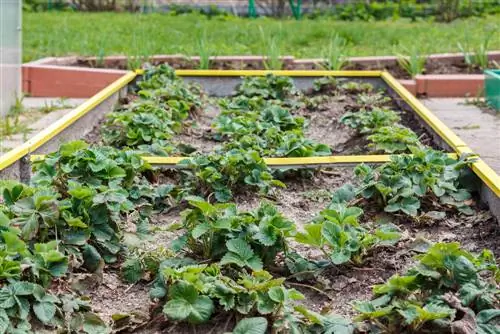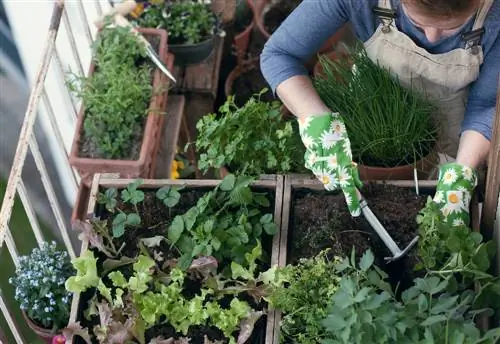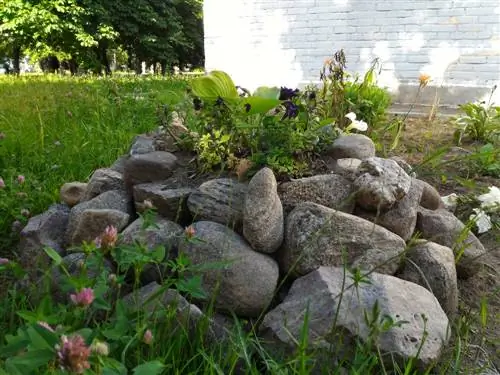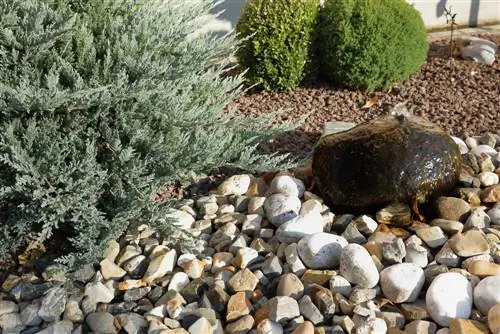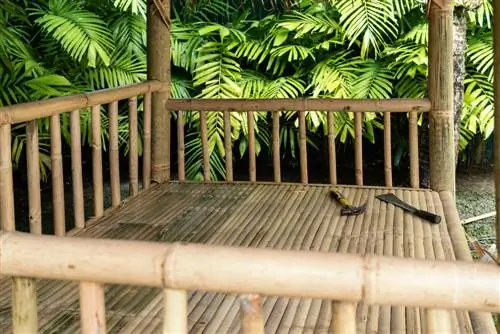- Author admin [email protected].
- Public 2023-12-16 16:46.
- Last modified 2025-06-01 06:02.
Raised beds are usually made of wood, but there are a number of much more durable materials. In addition to the stone that is also used, various metals are also recommended for the border of such a bed. These are often very durable and can be used in a variety of ways or combined with other materials.

Why is a metal raised bed a good choice?
Metal raised beds offer durability and can be made from different materials such as Corten steel, stainless steel or aluminum. They are available in numerous designs and can be flexibly combined and individually designed. Professional insulation and lining is recommended.
Metal - a versatile and durable material
Whether hot-dip galvanized and shiny or with a modern “rust look” in the form of Corten steel - metal is an attractive and very long-lasting material that is also very suitable for round or curved bed shapes. Metal raised beds are also often provided with a so-called “snail edge”, so that the voracious pests actually have no access to the fresh greenery. Raised table beds made of light sheet metal are particularly recommended for the balcony. These take up very little space and do not put undue strain on the statics. In principle, a wide variety of metal materials can be used to build a raised bed, but it is better to stay away from potentially dangerous raw materials that could release poisons into their surroundings. Disused railway sleepers, for example, are not suitable for a raised bed.
Types of metal raised beds
Metal raised beds offer a lot of variety: In addition to Corten steel with its rustic patina, galvanized raised beds made of sheet metal, powder-coated and / or boxes made of steel, iron or aluminum painted in various colors are also available. Metal can also be combined very well with other materials: you can fill gabions (wire mesh baskets) with stones and use them as a border for raised beds or insert wooden slats into a frame made of aluminum struts. What is common to all types is the great robustness and stability of the material - which also fits in particularly well with modern gardens. If you want to buy a raised bed for your balcony or terrace, you should be careful: not all metal raised beds are lightweight.
Advantages and disadvantages of different materials
Raised beds made of stainless steel or Corten steel have an interesting, rustic look thanks to their rusty red color. However, this patina also has a disadvantage: it stains heavily, especially on new raised beds, or can sometimes even be wiped off. Only after some time does the rust solidify. Much more serious, however, is the fact that the rust continues to eat through the steel and the material therefore becomes obsolete more quickly. Raised beds made of stainless steel, on the other hand, are much more durable, but are also very heavy and unwieldy. Aluminum, on the other hand, is lighter (and therefore also suitable for balconies). If you use iron or copper as materials, plan for their corrosion straight away - untreated iron rusts and copper forms verdigris over time due to contact with oxygen.
Build your own metal raised beds
There are a variety of different metal raised bed kits available in stores. You will find the right raised bed for every purpose, but you can also build one yourself using your own materials. For example, metal plates can be welded together as desired to create a stable box for the plants. The only disadvantage is that once parts have been welded, you cannot separate them from each other again and they are of course immobile. Instead of slabs, palisades, buried vertically in the ground, are also suitable for framing a raised bed.
Line metal raised beds
The manufacturers of prefabricated kits often claim that it is not necessary to line the metal raised beds with foil. The material would not require any moisture protection. Nevertheless, lining with bubble wrap, for example, makes sense, as does an insulating layer of polystyrene rigid foam or, if you want to be ecological, softwood fibreboard. In contrast to wood or plastic, metal is an excellent conductor of heat, which can be a problem in both extreme summer heat and winter frost. The heat is conducted through the metal border into the interior of the bed, so that the plant roots are literally “cooked”. In winter, the metal has no protective effect, for example to protect the roots of perennial plants from the cold. Insulation (which of course has to be protected from moisture with foil) between the metal wall and the filling is therefore essential.
Tip
Special care oils are available in stores (€17.00 on Amazon) that can be used to seal the surfaces of the metal raised bed against the penetration of moisture. Their use is particularly useful for raised beds made of Corten steel or other corrosive or oxidizing materials.

